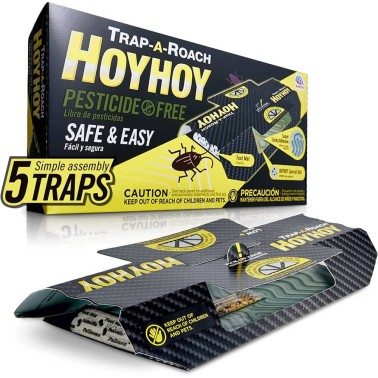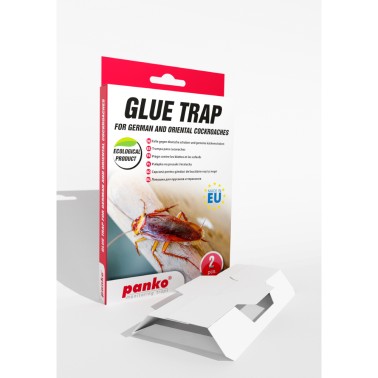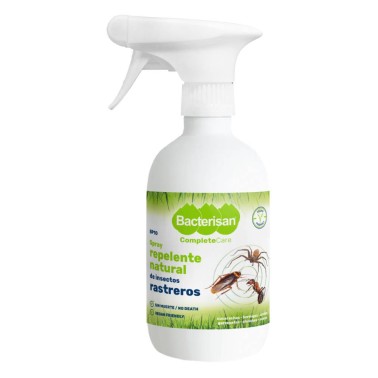Cockroach Traps
Cockroach traps are designed to capture and eliminate cockroaches. Their effectiveness varies depending on the type of infestation. Here we provide key information about cockroach traps. We also answer your most frequent questions.
Types of Cockroach Traps
- Adhesive Cockroach Traps: These are the most common and recommended by BirdGard Iberia. They consist of a sticky base with an attractant. Cockroaches are drawn to the trap and get stuck upon contact with the adhesive.
- Poison Traps: Contain a toxic bait that cockroaches ingest and then carry back to the nest, potentially affecting other colony members. If you opt for poison traps, it's important to handle them carefully, especially in homes with children or pets.
- Electric Traps: Use bait to attract cockroaches and then electrocute them.
Are Traps Effective in Eliminating Cockroaches?
Yes, BirdGard Iberia's adhesive traps are very effective in eliminating cockroaches. However, correct placement and maintenance as we explain below are very important.
If infestations are very large or recurrent, it may be necessary to seek help from a professional pest control service in your area for more thorough extermination for your specific case, which may require cockroach fumigation. Keep in mind that in this case, you will need to be away from your home for some time as the fumigants and pesticides used to eliminate cockroaches can contain chemicals that are harmful to humans and pets if inhaled or come into contact with the skin.
I have 5 adhesive cockroach traps, should I set them all at once? Or one by one?
To maximize the efficacy of your adhesive cockroach traps, I would recommend placing all of them at once at various strategic points. This will give you a better understanding of the areas of cockroach activity in your home or business and increase the chances of capture and permanently eliminating cockroaches.
Where is the Best Place to Set Cockroach Traps?
Traps should be placed in areas where cockroach activity is observed, such as under the sink, near appliances, and in dark, damp corners. Here are some guidelines on where to place them:
- Near Sources of Water and Food: Cockroaches are attracted to moisture and food. Place traps in your kitchen and bathroom, especially under the sink, around the refrigerator, near the oven and other appliances, and in cabinets.
- Dark and Hidden Areas: They prefer dark and hidden places. Consider placing traps behind furniture, under tables, in dark corners, and under beds.
- Entry Routes: Place traps near potential entry points such as cracks in walls, windows, doors, and places where pipes and cables pass through.
- Known Activity Zones: If you have already seen cockroaches in certain areas, be sure to place traps in those locations.
How Should I Maintain the Traps?
It is important to check the traps regularly and replace them when they are full or lose their stickiness. It is also advisable to follow additional prevention measures that we explain in more detail below, such as maintaining cleanliness, eliminating sources of water and food, and sealing potential entrances to help reduce and control the cockroach population.
How to Avoid Cockroaches at Home or in a Business?
In addition to using cockroach traps, it is crucial to maintain cleanliness and eliminate sources of food and water for cockroaches. This includes sealing cracks and potential entrances. Some effective strategies include:
Here are some effective strategies:
- Cleanliness. Clean regularly to eliminate food scraps and spilled liquids. Store food in airtight containers. Avoid leaving dirty dishes in the sink overnight and empty the trash frequently.
- Eliminate Sources of Water. Repair possible leaks in pipes, faucets, and appliances. Dry sinks and bathtubs after using them. Control humidity in your house.
- Seal Entrances. Seal cracks and openings in walls, floors, and around windows and doors. Check and repair window screens and ventilation grilles.
- Control Trash. Keep trash areas clean and make sure containers are well sealed. Dispose of trash regularly.
- Preventive Treatments. Consider using natural repellents like bay leaves or eucalyptus oil in areas prone to cockroaches.
- Check and Repair. Regularly check areas where you previously found cockroaches. Maintain your home well, repairing any structural damage that may be a refuge for cockroaches.
Remember that prevention is key. Keeping your home or business clean, dry, and well-sealed is the best way to prevent cockroaches from returning.
I've seen just one cockroach, should I be worried?
Seeing a cockroach should be a cause for concern, as where there's one, there are often more hidden. Cockroaches are not only unpleasant but can also carry diseases and cause hygiene problems.
Check the area for signs of more cockroaches. Look in dark and damp places, behind appliances, inside cabinets, and near sources of water. Then implement the measures we recommend in the "How to avoid cockroaches at home?" section.
What is the Most Common Cockroach in Europe?
In Europe, the most common cockroach species is the German Cockroach or Blattella germanica. This species is small, light brown in color, and is frequently found in domestic and commercial environments, especially in kitchens and bathrooms due to their preference for warm and humid areas.
They are known for their rapid reproduction, which can lead to significant infestations if not controlled in time. The German Cockroach feeds on a wide variety of foods, including food scraps, which makes them particularly attracted to kitchen environments.
How Long Do Cockroaches Live?
The lifespan of cockroaches varies by species, but in general, they can live from a few months to over a year. Specifically, the German Cockroach, which is the most common in Europe, usually lives around 6 to 12 months.
How Quickly Do Cockroaches Reproduce?
The speed at which cockroaches reproduce varies by species, but in general, they are known for their high rate of reproduction. A particularly notorious example of rapid reproduction is the German cockroach, which is the most common in Europe:
- Life Cycle: German cockroaches can mature from eggs to adults in just 50 to 60 days under optimal conditions.
- Oothecae: The female produces an ootheca (egg capsule) containing between 30 to 40 eggs.
- Reproduction Frequency: A female can produce 4 to 6 oothecae in her lifetime, although some may produce more.
- Population Growth: This means that, under ideal conditions, a single female and her offspring can lead to thousands of individuals in a year.
This rapid rate of reproduction is one of the reasons why cockroach infestations can escalate quickly and why it is crucial to address them effectively and early. Preventive measures and quick control are essential to avoid a cockroach infestation.
Why Don't I See Cockroaches During the Day?
Cockroaches are nocturnal creatures, meaning they are primarily active at night. This behavior is due to several reasons:
- Avoiding Predators: In nature, being active at night helps cockroaches avoid many of their natural predators that are diurnal.
- Light Sensitivity: Cockroaches generally avoid light and prefer dark environments. This is partly due to their biology; their eyes are adapted to function better with low light.
- Favorable Environmental Conditions: Darkness is often associated with calmness, fewer disturbances, and in many environments, an increase in humidity, conditions that cockroaches find favorable.
- Feeding and Behavior Habits: Cockroaches usually emerge from their hiding places in search of food and water at night, when there is less human activity and, therefore, less risk of being discovered or disturbed.
For these reasons, you are more likely to see cockroaches at night or in dark areas in your home or business. If you observe cockroaches during the day, this may indicate a cockroach infestation, as cockroaches that do not find enough space in their hiding places or are competing for resources may be forced to come out during the day.
Where Do Cockroaches Hide?
Cockroaches seek hiding places that provide warmth, moisture, and access to food. Here are some common places where cockroaches hide in homes and buildings:
- Under and behind appliances: Places like behind the refrigerator, stove, or dishwasher are ideal due to the heat generated by these appliances.
- Pantries and Cabinets: Especially if there are food residues or spills.
- Under the sink: Because of the moisture and possible leaks.
- Cracks and crevices: In walls, floors, and ceilings. Cockroaches can flatten themselves and enter very small spaces.
- Inside electronic devices: Due to the heat they generate.
- In drains and pipes: As these are often damp and less frequented areas.
- Under carpets and behind window or door frames: For the darkness and shelter.
- In storage rooms and basements: Especially if they are cluttered and offer many hiding places.
- Behind and inside upholstered furniture: If there are crumbs of food or debris.
Do Cockroaches Fly?
Yes, some species of cockroaches can fly, but not all cockroaches fly. For example, the German cockroach, which is the most common in Europe, has wings but rarely flies. Its main mode of movement is running.
However, some species, like the American cockroach (Periplaneta americana), have wings and are capable of flying. However, they tend to do so only over short distances or when the temperature is warm enough. The flight is more of a glide or slide from a high place to a lower one.


 3 reviews
3 reviews

